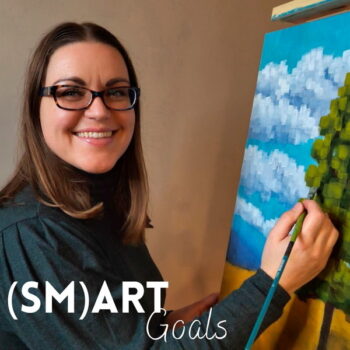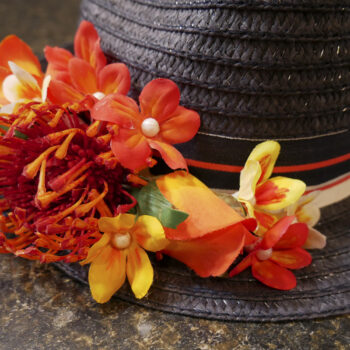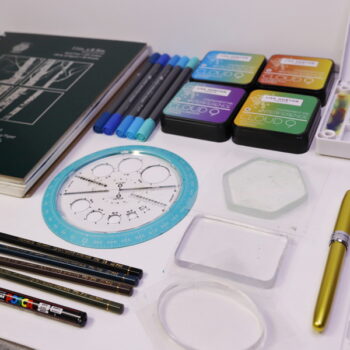
4 Lessons I Learned from Almost Anxious
Today I wanted to share with you the 4 lessons I learned from Almost Anxious. If you have been following my reading list for 2020, this is one of the books that I committed to reading to help my personal mental wellness.
Why Almost Anxious?
Almost Anxious is a book that was recommended to me by a friend. The premise of this book is how to deal with the “almost anxious” moments in our lives. One of the problems with anxiety is that we are often put into one of two boxes: anxious or not anxious. This criterion is not always helpful. Many of us have anxiety that is above healthy levels but does not fit the criteria of a General Anxiety Disorder (GAD).
This book is helpful because it talks about this grey area. The almost anxious state is when we know something is not right, but we do not have an anxiety disorder. For many of us, we want to learn how to control our anxiety in a healthy way. This book is very helpful in finding ways to move from almost anxious to a healthy anxiety level.
https://youtu.be/NYBmRPBKaWI
Anxiety is Normal
The first lesson I learned from Almost Anxious is that anxiety is normal. It is part of our physiology. The anxiety that triggers our fight or flight response is designed to keep us alive.
In healthy levels, our anxiety can help us. It can help us to perform at our best, to get us in “the zone.” It can increase focus, creativity, and help us with problem solving and multitasking.
The problem is when our anxiety levels move from a healthy level. When this occurs, we move from a state of high performance to almost anxious and can even move into an anxiety disorder. In these cases, the anxiety that should be motivating us turns into panic, fear, and the inability to deal with others well or take care of ourselves.
Evaluating Anxiety
My second lesson from this book was understanding the importance of evaluating our anxiety. This book is filled with exercises about how to evaluate your anxiety by understanding what truly makes you anxious. There are three major flavors of anxiety, worry, social and physical anxiety. Through various exercises it helps to determine what is causing your anxiety and how we can start moving past it.
The Hamster Wheel of Anxiety
It can be so easy for us to fall into the “hamster wheel of anxiety.” This is when we fall into patterns where our thoughts, behaviours and feelings cause us to be even more anxious. It can feel almost impossible to break out of this cycle.
By understanding that your thoughts and feelings, although valid, may not be helpful in some situations. For example, with public speaking, you may start feeling nervous, sweaty, and scared. This will lead to thoughts like “What if everyone laughs at me?” or “What if people think that I’m stupid if I say something wrong?”
These thoughts may lead to behaviours that are not helpful to us. We may avoid the situation altogether, run out of the room, or struggle through a presentation because of our thoughts and feelings. By understanding how our thoughts and feelings relate to our anxiety, we can understand what is causing our reactions and behaviours and change them.
Avoidance is the Enemy
The third lesson I learned was that avoidance is the enemy. I had to come face to face with the fact that I use avoidance in my life more than I would like to admit. Avoidance brings temporary relief from feelings of anxiety but in the long term can bring with it more anxiety.
What is Avoidance?
In Almost Anxious, avoidance is defined as anything that you do that immediately brings your anxiety level down. It can feel like the quick fix, but often does not help solve the underlying issue that is breeding the anxiety. Often it causes us to avoid situations that might put us in a place where we have anxiety.
When you are in an almost anxious situation, there are two things that you can do, confront the anxiety causing situation or avoid it. It is much easier to avoid the anxiety, but not always helpful.
Almost Anxious suggests many ways to work through avoidance. We must work through the situations that bring anxiety so that instead of avoiding or accepting anxiety, we can face the fears, situations and beliefs that bring the feelings of anxiety.
Anxiety Does Not Need to be a Lifestyle
I was empowered by the idea that anxiety does not need to be a lifestyle. We do not have to tolerate it and live with our anxiety. We do have a choice.
We must find ways to approach the anxiety and practice moving past it. The result of this is that anxiety does not need to be a lifestyle. We can conquer our anxiety and have healthy levels of anxiety instead of our anxiety dictating how we will live our lives.
Finding Mindfulness
The fourth lesson in Almost Anxious was finding practical ways to manage anxiety. Ways of managing anxiety include exercise, social networks and mindfulness. Finding mindfulness in our lives was a concept that really spoke to me. Often people speak about mindfulness, but what does it really mean?
This book’s definition of mindfulness is “the experience of paying attention, in the present moment, non-judgementally.” When you are being mindful, you are not fearing the future or living in regret of the past.
Finding mindfulness is not an easy thing to master. It takes practice and patience. For many of us, being mindful in the moment for longer than a minute or two can be difficult. It is very easy to have your mind wander when you are practicing mindfulness. It can be challenging to stay in the moment.
I try to practice mindfulness, but I found closing my eyes and breathing exercises did not always work for me. I have become better at mindfulness as time goes on, but I think that it’s important to find something to help you focus your mindfulness.
The Natural World
The natural world can be a huge help for practicing mindfulness. In the summer, I sit outside in my garden and focus on the flowers. I let my mind rest, I listen to my breathing and focus my mind by being in the natural world. I need something to focus on, to help me find that relaxation and mindfulness. Listening to the birds chirping and the wind in the trees helps me to stay in the moment more easily.
During the winter months, I often use my aquarium as my source to find mindfulness. Watching the plants move in the current and the fish swim is a very relaxing outlet for me. It allows me to slow my mind, to stay in the moment and find mindfulness.
How do you Manage Your Anxiety?
How do you manage your anxiety daily? I would love to hear your thoughts on this topic. Feel free to comment below or contact me directly. I hope that you find time for mindfulness this week.





